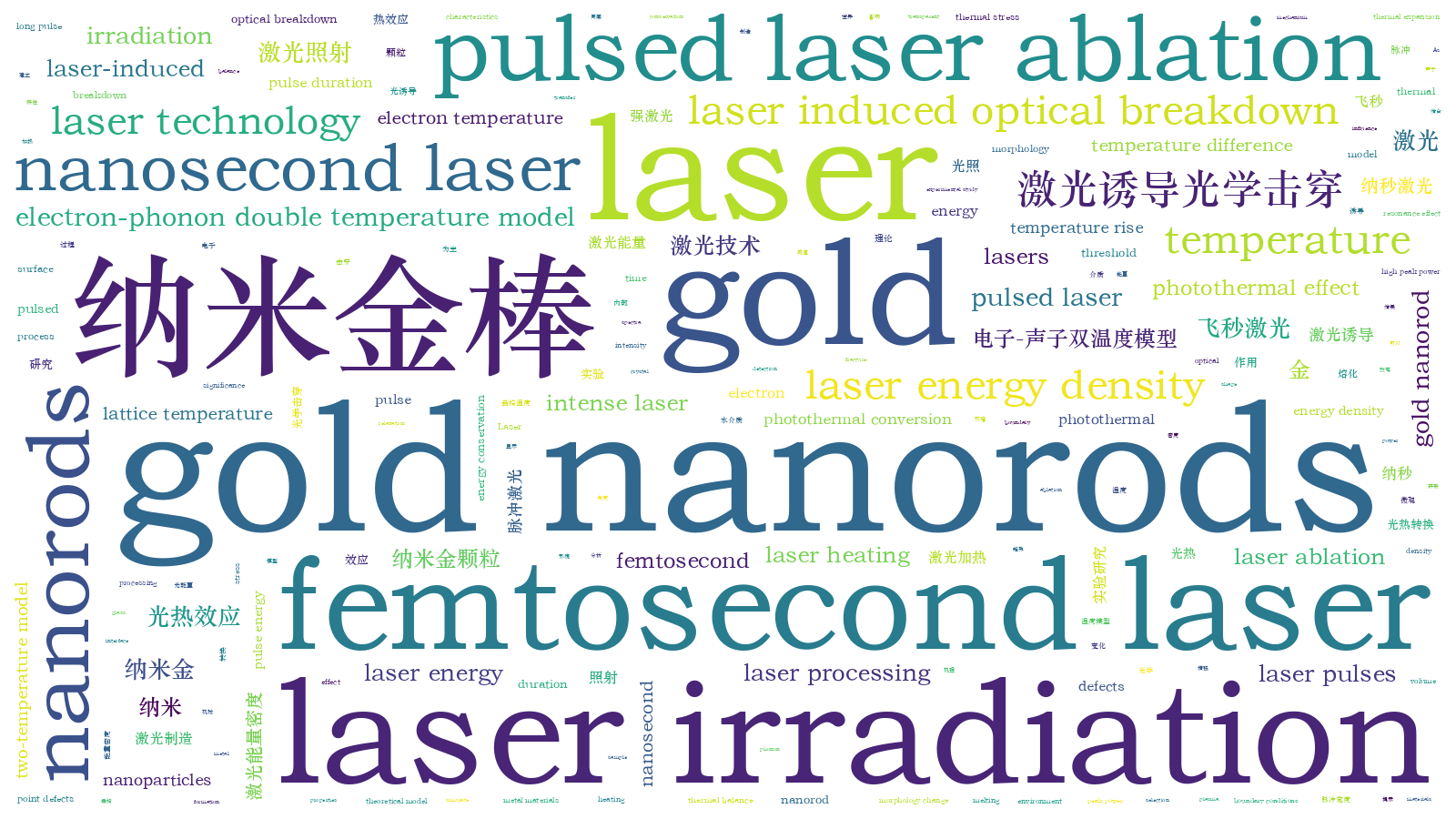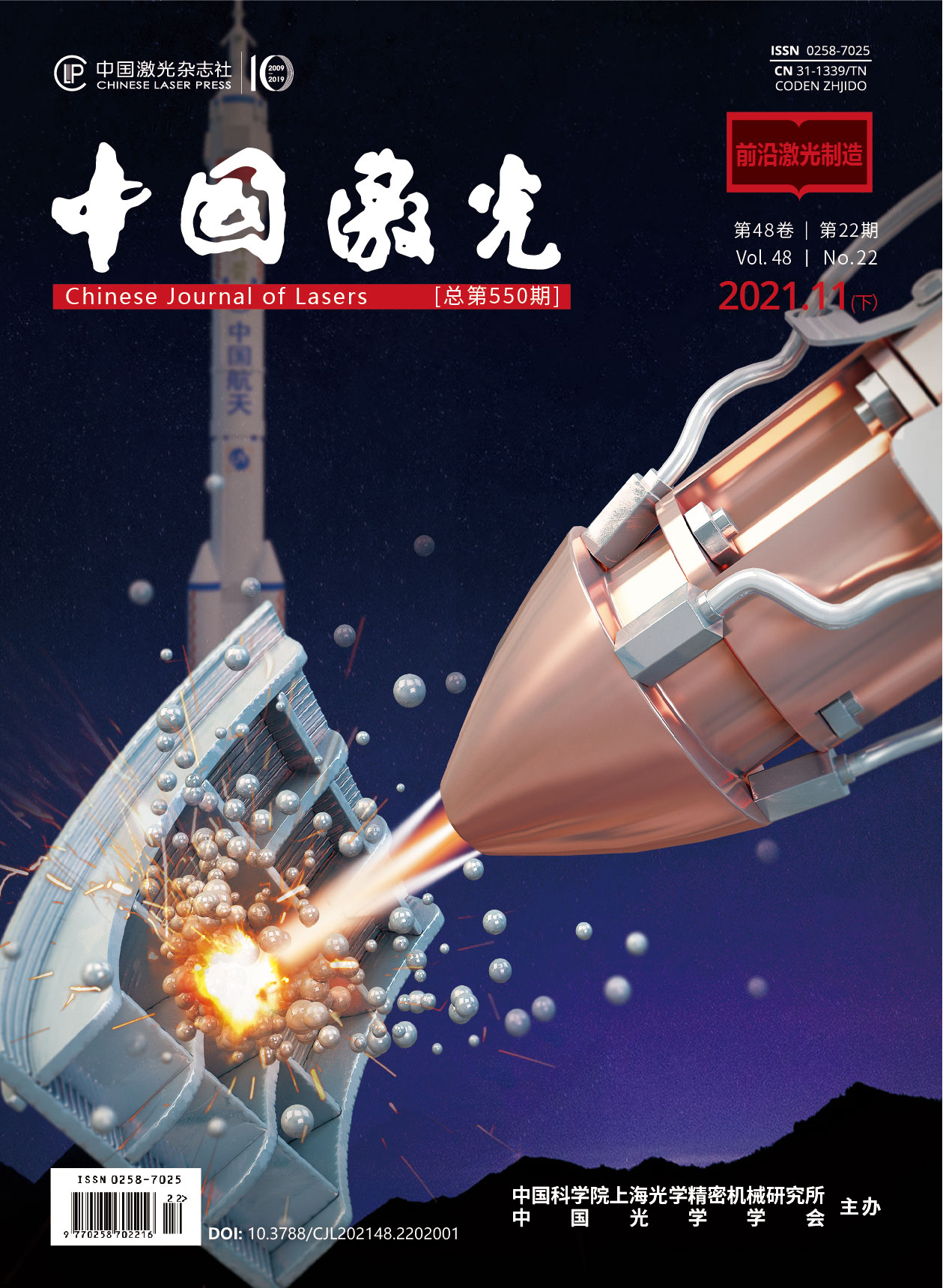纳秒与飞秒激光作用下纳米金棒光热效应的理论与实验研究  下载: 923次
下载: 923次
Objective At present, laser-induced optical breakdown has been widely used in biological sample detection, manipulation, laser-induced breakdown spectra and laser processing of transparent media (glass, etc.). Using the local plasma resonance effect of gold nanoparticles, the laser-induced optical breakdown effect can be enhanced by gold nanoparticles. Under the laser irradiation with strong pulse energy, the morphology of gold nanoparticles may gradually change into irregular spheres with sharp angles and convex edges, leading to significant changes in their photothermal conversion abilities. From the microscopic point of view, it is of great guiding significance to reveal the photothermal conversion rule inside gold nanoparticles in the process of nanosecond or femtosecond laser irradiation and to explore the mechanism of the morphology change of gold nanoparticles under the action of two kinds of lasers. In this paper, a theoretical model of high intensity pulsed laser irradiation of gold nanorods is constructed to study the effects of laser energy density and pulse duration on the photothermal conversion process. Combined with the experimental study of laser irradiation of gold nanorods, the difference in the microscopic melting characteristics of gold nanorods under nanosecond or femtosecond laser irradiation is analyzed.
Methods In this paper, the electron-phonon dual temperature model under the action of laser is used to simulate the heating process of gold nanorods in water by intense laser pulses. Firstly, the basic properties of each domain are strictly defined, including the initial temperatures of gold nanorods and surrounding environment and the selection of boundary conditions for the surrounding water. The electron and lattice temperature variations are obtained by solving the governing equations based on the two-temperature model. According to the solved values of electron and lattice temperatures, we can use the energy conservation equation of water to obtain the transient changes of water temperature along the R and Z axes. By changing the pulse duration time and energy density of the laser, we can calculate the changes in lattice temperature and water temperature of the gold nanorods to compare with the experimental results.
Results and Discussions After the femtosecond laser irradiation, the free electrons in the gold nano-rods first absorb the laser energy, leading to the temperature rise of electrons. After electron-lattice relaxation, the electrons transfer heat to the lattice. Because the laser action time is short, the lattice and electrons do not reach a thermal balance, so the electron temperature is much higher than the lattice temperature. In addition, the energy has not been transferred to the surrounding environment, so the surrounding water temperature is significantly lower than that of the gold nano-rods. The pulse duration is significantly prolonged under the nanosecond laser irradiation, the temperature difference between the lattices and the free electrons in gold nanorods is significantly reduced compared with that under femtosecond laser irradiation, and the surrounding water temperature is significantly increased.
Comparing gold nanorods irradiated by nanosecond laser and those irradiated by femtosecond laser, we can find that when the gold nanorods are irradiated by 0.001 J/cm2 femtosecond laser, the gold nanorods will be melt, but at the moment, the temperature of gold nanorods around the water is far lower than the melt temperature of the gold nanorods, and the temperature difference between gold nanorods and water is as high as 1100 K. Such a large temperature difference results in that the surface and interior of the gold nanorods cannot change in thermal expansion volume at the same time. The huge internal stress is formed due to the different volume change of each part. As a result, the gold nanorod is prone to produce point defects and line defects from the inside, and these defects subsequently evolve into plane defects and then nanorods fracture. When the 0.1 J/cm2 nanosecond laser is applied to the gold nanorod and makes it melt above threshold, the gold nanorod melt temperature, the water temperature around the interface of gold nanorods and the water temperature are 550 K, far below the femtosecond laser heating threshold. The gold nanorod surface thermal stress is significantly reduced and the gold nanorods are not easily broken.
Conclusions In this paper, the theoretical and experimental studies are carried out to analyze the photothermal conversion inside gold nanoparticles and the influence on environmental media during laser irradiation from the microscopic point of view. The results show that the changes in electron and lattice temperatures under nanosecond laser irradiation are basically the same as those under femtosecond laser irradiation. However, compared with those under femtosecond laser irradiation, the temperature difference between the lattices and the free electrons in the gold nanorods is significantly reduced and the surrounding water temperature is significantly increased due to the significantly long pulse duration under nanosecond laser irradiation. Since the high peak power is favorable for the formation of defects on the crystal surface, the melting threshold of gold nanorods under femtosecond laser irradiation (about 0.001 J/cm2) is 99% lower than that under nanosecond laser irradiation (about 0.1 J/cm2). By comparing the experimental results under femtosecond and nanosecond laser irradiations on gold nanoparticles, the difference in the photothermal conversion characteristics of gold nanoparticles under different pulsed laser irradiations are further analyzed. The results show that when the temperature of the gold nanorods reaches the threshold, the shape of the gold nanorods changes under femtosecond laser irradiation, while the morphology of the gold nanorods changes under nanosecond laser irradiation. The results here have important guiding significance for the future experiments of high intensity pulsed laser ablation of metal materials.
赵鹏辉, 冯璟, 邢林庄, 李东, 陈斌, 廖丁莹. 纳秒与飞秒激光作用下纳米金棒光热效应的理论与实验研究[J]. 中国激光, 2021, 48(22): 2202014. Penghui Zhao, Jing Feng, Linzhuang Xing, Dong Li, Bin Chen, Dingying Liao. Theoretical and Experimental Investigations on Photothermal Effect of Gold Nanorods Irradiated by Femtosecond or Nanosecond Laser[J]. Chinese Journal of Lasers, 2021, 48(22): 2202014.







